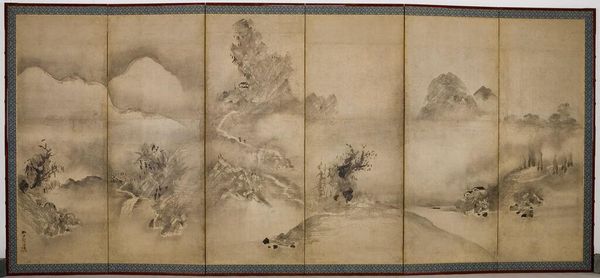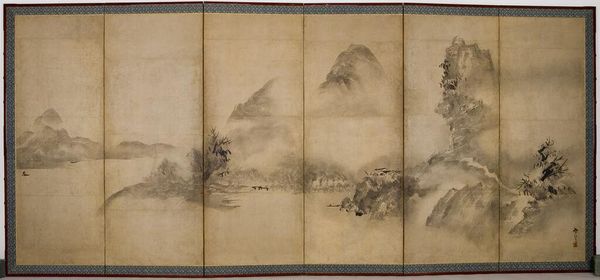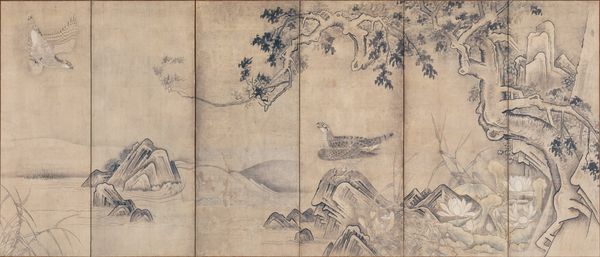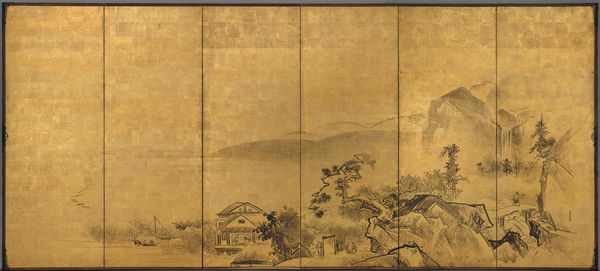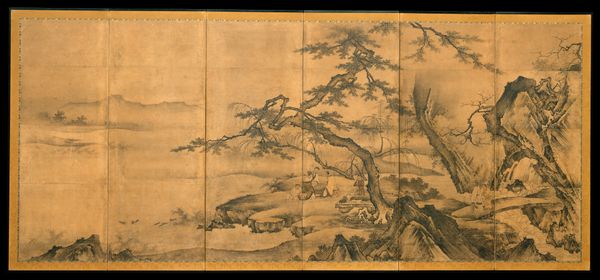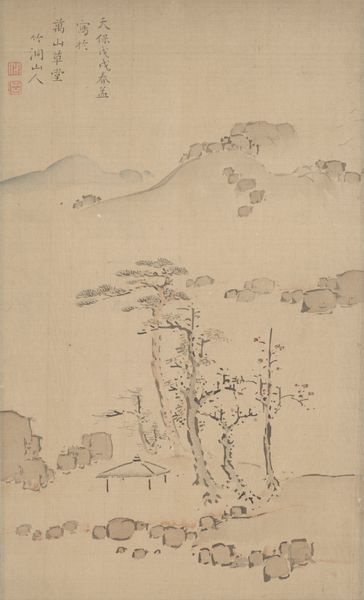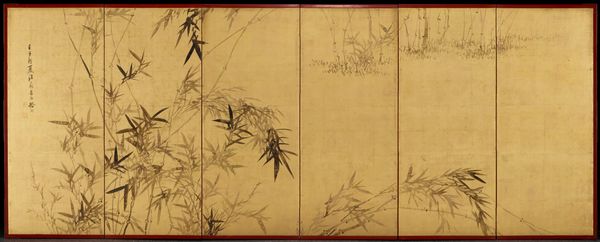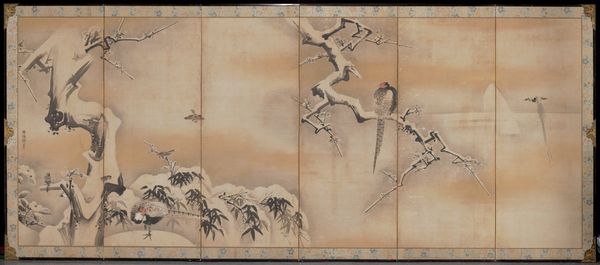
watercolor, ink
#
medieval
#
water colours
#
asian-art
#
landscape
#
figuration
#
watercolor
#
ink
#
men
#
watercolor
Dimensions: Each: 58 7/8 in. × 11 ft. 4 in. (149.5 × 345.5 cm)
Copyright: Public Domain
Editor: This is "Chinese Sages" by Kano Sanraku, likely made sometime between 1567 and 1633. It’s done with ink and watercolor. There is a real sense of serenity; everyone seems to be in their own little world, even while in company. How do you interpret this work? Curator: I see this not just as an expression of serenity, but as a visualization of power and privilege operating through cultural and intellectual pursuits. The landscape setting isn’t merely a backdrop; it's a claim to refined sensibilities, a visual assertion of social dominance tied to nature. The ‘sages’ depicted are men, inevitably, participating in conversations coded for exclusion, perpetuating a specific power structure. Have you thought about it that way? Editor: That's a pretty different view. I didn’t think about it beyond a philosophical observation. Is the cultural element very critical in analyzing this art? Curator: Absolutely. The very act of depicting these ‘sages’— who are they? What gives them the authority of wisdom?– it reinforces their position. Look at how the artist situates them within a curated landscape. Nature becomes a stage for their intellectual performance. Are other voices included? What perspective do we miss here? Editor: So, the landscape itself isn't just beautiful, but a symbol of that power, defining who belongs and who doesn’t? It makes you wonder whose perspectives are left out. Curator: Precisely! It urges us to question the narratives promoted, challenging these romanticized visions of the past with considerations of gender, class, and access. Who benefits from such narratives? Editor: It definitely provides a new layer of interpretation that invites the audience to engage in conversation. Thank you. Curator: My pleasure. It’s essential that we actively challenge accepted histories through the lens of social justice and inclusion.
Comments
No comments
Be the first to comment and join the conversation on the ultimate creative platform.
